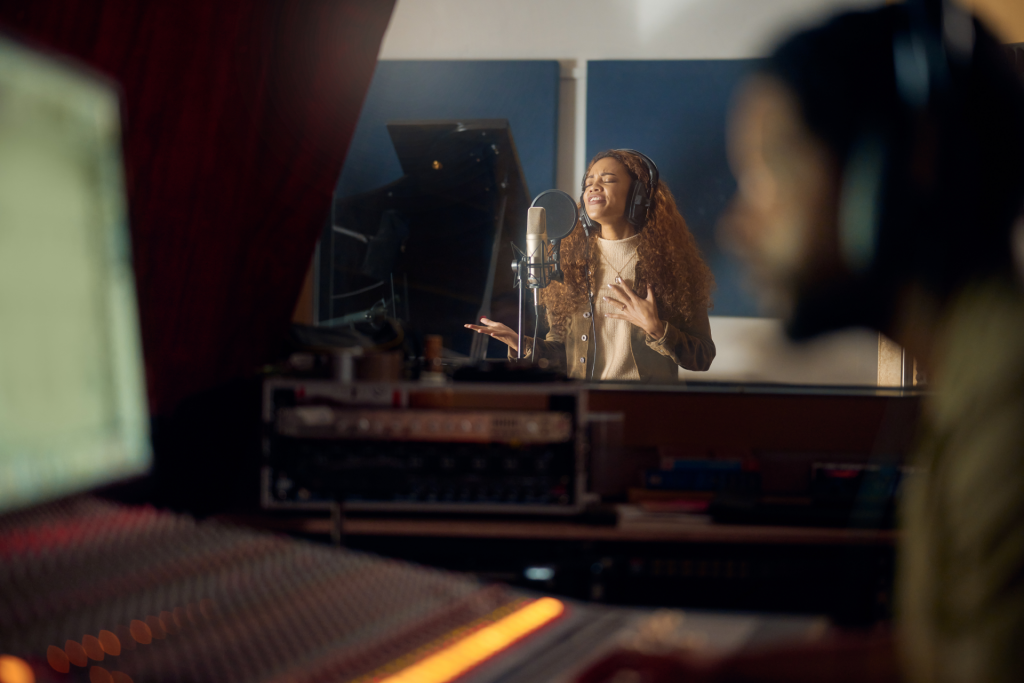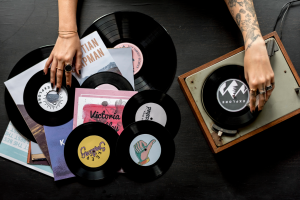In the vast world of music, few endeavors are as simultaneously challenging and rewarding as the creation of a cover song. At its core, a cover is an artist’s personal rendition of another musician’s work.
While it might seem like a straightforward task, replicating a song’s original essence while infusing it with one’s unique perspective demands a deep understanding of both the original piece and one’s artistic identity. For many listeners, a cover song is more than just a rehashed version; it’s an auditory bridge connecting the familiar with the novel. Over the years, several covers have even eclipsed their originals in popularity, showcasing the power of reinterpretation.
However, as artists venture into this territory, they’re faced with a delicate balancing act: paying homage to the original while ensuring their rendition stands distinct. This article delves into the art of mastering cover songs, exploring the nuances that can transform a well-known track into a fresh, personal statement.
Whether you’re an artist looking for guidance or a music enthusiast keen on understanding the intricacies of this craft, journey with us into the fascinating realm of cover songs.
Historical Context of Cover Songs
The practice of performing and reinterpreting other artists’ works predates the modern recording industry. In classical times, musicians often played renditions of compositions without the concept of “originality” as we understand it today.
As music evolved into the commercial entity we recognize, the 20th century saw the rise of cover songs as a notable trend, particularly in the realms of jazz and blues. Musicians would frequently interpret standards, putting their unique spin on them.
The advent of rock ‘n’ roll further propelled the culture of covers, with early rock artists often covering R&B hits for different audiences. Iconic songs, such as Elvis Presley’s “Hound Dog,” originally by Big Mama Thornton, and The Beatles’ “Twist and Shout,” first recorded by the Top Notes, are testaments to this trend.
The 1960s and ’70s fostered an environment where artists began reimagining tracks from varied genres, blending them into their musical styles. This era brought covers to the mainstream, making them staples on charts and radio playlists.
In the digital age, the accessibility of music platforms has democratized cover culture, allowing emerging artists to share their renditions globally. Today, covers stand as tributes, creative expressions, and sometimes even cultural commentaries.
The Appeal of Covering Songs
Cover songs possess a unique allure that often resonates deeply with both artists and audiences. At the heart of this appeal is the blend of familiarity and novelty. For listeners, covers evoke the comfort of a known melody or lyric while introducing a fresh perspective, granting them the pleasure of rediscovery.
For artists, covering a song is an opportunity to pay homage to their musical inspirations. It’s a nod to those who paved the way, a chance to connect with the legacies that influenced their artistic journeys. Moreover, covers allow artists to showcase their versatility, demonstrating their ability to adapt and innovate within the confines of an existing framework.
In a saturated music market, cover songs can also serve as strategic tools. By tapping into the popularity of a well-known track, emerging artists can draw attention, using it as a stepping stone to introduce their original material to a wider audience.
Furthermore, covers foster a sense of global community. They transcend linguistic and cultural barriers, uniting listeners from diverse backgrounds under the umbrella of a shared musical experience. In essence, the appeal of cover songs lies in their capacity to bridge the old with the new, the known with the unexplored, creating a rich tapestry of musical expression.
Legal and Ethical Considerations
Navigating the landscape of cover songs requires more than just musical prowess; it also demands an understanding of the legal and ethical dimensions involved.
Legally, artists cannot simply reproduce or distribute another’s song without obtaining the necessary licenses. For covers, a mechanical license is typically required, granting the artist the right to reproduce and distribute the song. Failure to secure such permissions can lead to lawsuits and significant financial penalties. It’s crucial to note that while a mechanical license allows for a cover’s distribution, it doesn’t permit changes to the song’s core lyrics or fundamental melody.
Ethically, while artists have the freedom to reinterpret a song, it’s paramount to respect the original work’s essence. This means acknowledging the original creators, avoiding misrepresentation, and steering clear of cultural appropriation, especially when covering songs rooted in specific cultural or ethnic traditions. Giving due credit not only avoids potential controversies but also enhances an artist’s credibility in the eyes of both peers and fans.
Mastering the art of cover songs isn’t just about the music; it’s also about understanding and respecting the boundaries, ensuring a harmonious blend of creativity and responsibility.
Steps to Crafting a Unique Cover
Here’s how to craft a unique cover in just 8 simple steps:
- Selecting the Right Song: Opt for a song that resonates personally. It’s easier to bring out a unique touch when there’s an emotional connection.
- Reinterpreting the Song: Think beyond the original genre or style. A pop song might take on a new life as an acoustic ballad or a jazz rendition.
- Personalizing the Lyrics: While staying true to the song’s message, consider slight tweaks to fit your narrative or experience. Remember to avoid altering the song’s core essence without permission.
- Reimagining the Song’s Structure: Experiment with the arrangement. Introduce a new instrumental bridge, extend the chorus, or play around with harmonies to make the song distinctively yours.
- Adapting Vocals: Your voice is unique. Whether it’s adding vocal runs, changing the song’s key, or introducing harmonies, use your vocal strengths to differentiate your version.
- Incorporating New Instrumentation: Introduce instruments not present in the original. This could be as simple as adding a violin to a previously electronic track or incorporating percussions for a different feel.
- Production Choices: The ambiance and mood of a song can shift dramatically based on production. Consider working with a producer who understands your vision and can bring fresh insights.
- Feedback and Refinement: Before finalizing, seek feedback. Fresh ears can offer insights on areas of improvement or innovation.
Each of these steps serves as a building block, helping artists craft a cover that is both an homage to the original and a distinct piece of artistry in its own right.
Production and Performance Considerations
The transformation of a cover song from concept to a tangible piece of art hinges on crucial production and performance choices. Production isn’t just about sound quality; it’s the canvas on which the artist’s vision comes to life. The right production amplifies the song’s emotions, setting it apart from the original.
Firstly, consider the ambiance. Does the cover demand an intimate, acoustic setting or a grand orchestral backdrop? Subtle reverb, for instance, can create an ethereal atmosphere, while a stripped-back production might spotlight raw emotions.
Instrument choices further define the cover. Unconventional instruments can infuse a distinct flavor, making the rendition memorable. Think of a synth-driven pop track reimagined with folk instruments.
Vocally, nuances in delivery during live performances can elevate the cover. Dynamic control, vocal textures, and stage presence play pivotal roles. Engaging with the audience, sharing the story behind choosing the cover, or visual elements like lighting and props can make performances unforgettable.
Finally, keep the song’s narrative in mind. If the cover alters the song’s mood or message, ensure that the production and performance choices align with this new direction, offering listeners a cohesive experience.
Promoting Your Cover Song
Once your cover song has been meticulously crafted, the next challenge is ensuring it reaches the ears of eager listeners. In today’s digital age, promotion is as pivotal as the music itself.
Utilize Social Media: Platforms like Instagram, TikTok, and Twitter are invaluable. Share snippets, behind-the-scenes footage, or stories about the inspiration behind your cover to engage fans and create buzz.
Leverage Streaming Platforms: Upload your cover to platforms like Spotify, Apple Music, and YouTube. Curated playlists or algorithm-driven recommendations can help amplify your reach.
Collaborate with Influencers: Partner with social media influencers or fellow artists. Their endorsement or shared content can introduce your cover to a broader audience.
Engage in Music Communities: Online forums, Facebook groups, or community-driven platforms like SoundCloud offer spaces for music enthusiasts to discover and discuss new renditions.
Perform Live: Incorporate your cover in live sets or gigs. This not only showcases versatility but also caters to an audience seeking familiar tunes.
Seek Press Coverage: Reach out to music blogs, magazines, or local media. A featured article or interview can significantly bolster your cover’s visibility.
Remember, the key is authenticity. Promote your cover in ways that resonate with your artistic identity, ensuring that listeners not only appreciate the song but also connect with the artist behind it.
To Sum It Up
The journey of crafting, producing, and promoting a cover song is a testament to the ever-evolving nature of music and its profound impact on both artists and listeners. While original compositions offer a window into the songwriter’s soul, cover songs present a unique opportunity for artists to merge their voice with the echoes of another, crafting a harmonious blend of familiarity and innovation.
The appeal of covers lies in their versatility. They traverse genres, eras, and cultures, creating a mosaic of musical expressions that cater to diverse tastes. For artists, covers provide a platform to showcase their interpretative prowess, all while paying homage to influential tracks that have shaped the musical landscape.
However, as we’ve delved into, the process isn’t without its challenges. From selecting the perfect song and reimagining it to understanding the intricate web of legalities and ensuring effective promotion, mastering the art of cover songs is a meticulous endeavor.
Yet, when done right, the rewards are immense. A successful cover can introduce an artist to new audiences, revitalize classics for modern ears, and even stand shoulder to shoulder with original hits in terms of popularity and impact.
In this dynamic age of music, where boundaries are continuously expanding, covers serve as bridges—linking the past with the present, the known with the new, and most importantly, artists with their listeners. Embracing the art of covering songs is, thus, a celebration of music’s timeless essence and its infinite possibilities.



